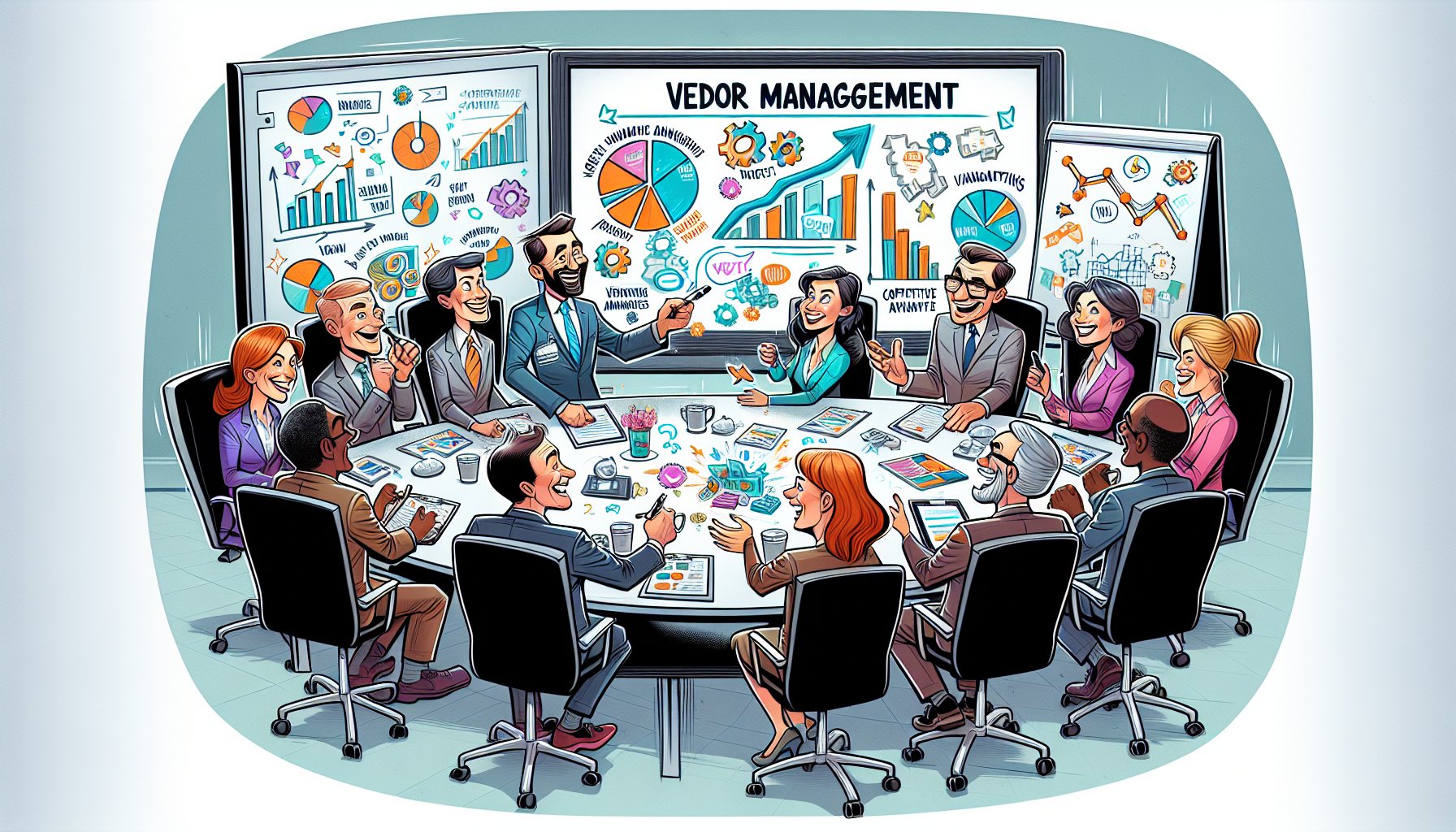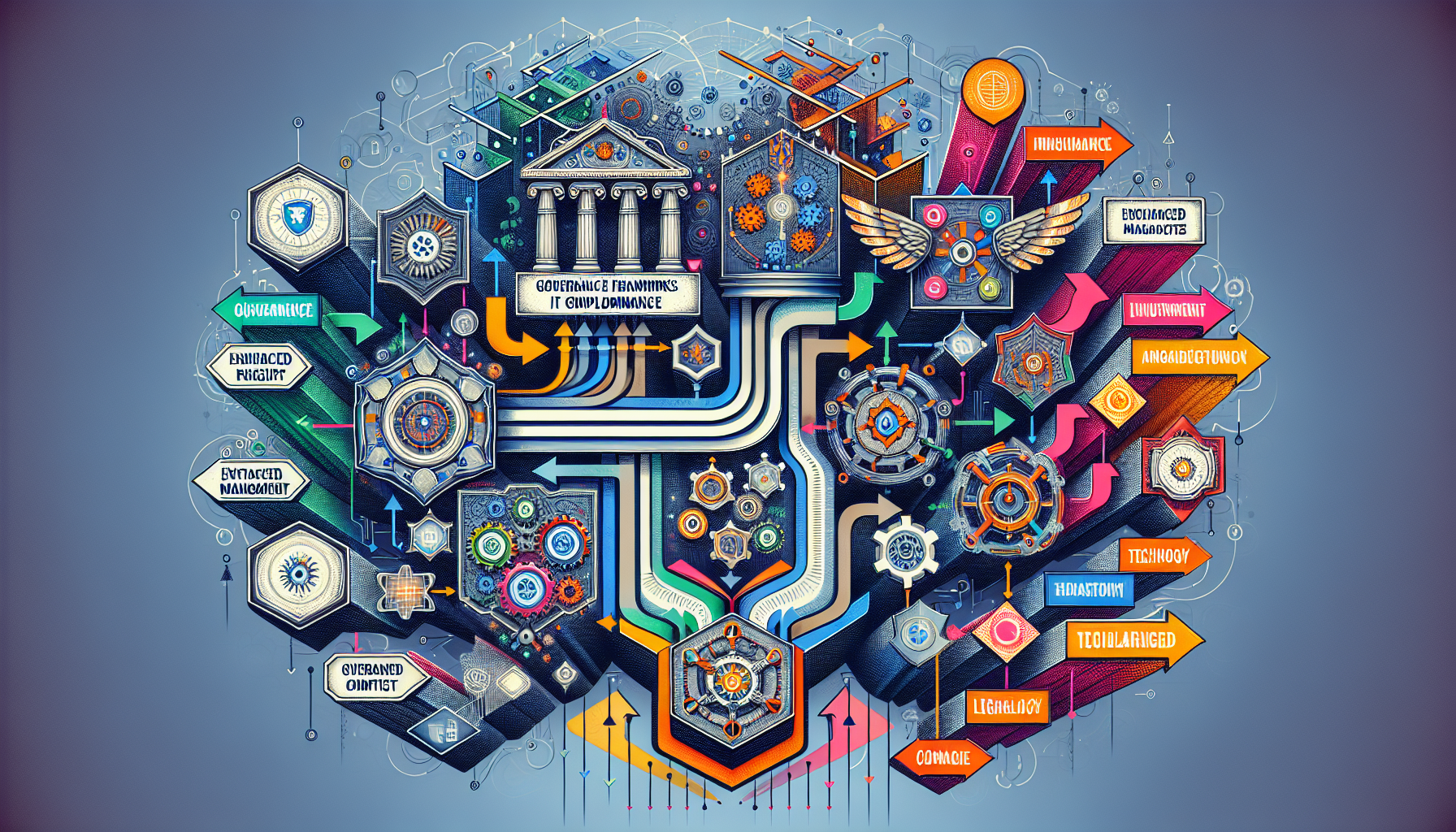Breaking free from legacy systems: how to modernise without disruption is a challenge many organizations face. How can you upgrade without halting operations? This guide covers evaluating current systems, planning, choosing the right strategy, and minimizing disruptions. Learn how to modernize smoothly.
Key Takeaways
Legacy systems incur high maintenance costs, security risks, and operational inefficiencies, necessitating modernization for organizational growth and productivity.
A comprehensive evaluation of legacy systems is essential, focusing on performance bottlenecks, security vulnerabilities, and a clear understanding of system relationships for effective modernization planning.
Selecting the appropriate modernization strategy—such as rehosting, refactoring, and rebuilding—aligned with business goals and involving stakeholder communication is critical to minimize disruption and enhance operational efficiency.
Understanding Legacy Systems

Legacy systems often result in high maintenance costs due to their outdated technology, consuming a large portion of IT budgets. These older systems are not only costly but also come with significant security risks. Legacy software exposes businesses to cyber threats due to the absence of modern protections against sophisticated attacks. The operational inefficiencies and frequent maintenance required by these systems further strain resources and hamper productivity.
Managing large amounts of data across multiple platforms is another challenge posed by legacy systems. This complexity can cause data inconsistencies and management difficulties, complicating the maintenance of accurate and reliable information. Furthermore, many legacy systems will require substantial updates within the next five years to avoid being outperformed by competitors. The inability to scale effectively and manage higher workloads can severely limit an organization’s growth and operational efficiency.
Maintaining outdated technology hinders an organization’s ability to innovate, respond to market changes, and meet customer demands. Recognizing these issues is the first step towards modernizing legacy systems and unlocking the potential of modern platforms and technologies.
Evaluating Your Legacy System
Before embarking on the journey to modernize legacy systems, it’s crucial to evaluate your existing systems thoroughly. Legacy systems often lack modern features, leading to inefficiencies in performance and higher operational costs. These inefficiencies can manifest as increased downtime and failures, which disrupt business operations and reduce overall productivity.
Assessing security vulnerabilities is another critical aspect. Outdated technology can expose your organization to cyber threats, making it essential to identify and address these risks during the evaluation process. The architecture and system relationships in legacy environments can be unclear, posing challenges in understanding and managing the system components effectively.
Performance bottlenecks and delays in time-to-market for new products are common issues with older systems. Evaluating these factors helps in identifying areas where modernization can lead to improved system performance, better integration capabilities, and enhanced security measures. This comprehensive assessment sets the foundation for a successful legacy system modernization strategy.
Planning for Modernization

Careful planning is the cornerstone of a successful modernization process. Defining clear objectives is crucial for aligning modernization efforts with overarching business goals. This involves setting specific, measurable, achievable, relevant, and time-bound (SMART) goals to guide the modernization process and ensure it meets the desired outcomes.
A thorough assessment of current systems is necessary to inform decision-making effectively when starting application modernization. This assessment helps in prioritizing applications based on their business impact and user experience, ensuring that the most critical systems are addressed first. Effective communication among stakeholders is also vital for garnering support and aligning everyone with the modernization plans.
A culture of continuous improvement keeps modernized applications relevant and competitive. By fostering an environment where teams are encouraged to innovate and improve continuously, organizations can maintain their competitive edge and adapt to evolving business needs.
Choosing the Right Modernization Strategy

Selecting the right modernization strategy is crucial to the success of your digital transformation. Various strategies, such as rehosting, refactoring, replatforming, rebuilding, and replacing, offer different benefits and challenges. The key is to align the chosen approach with your organization’s goals, budget, and the complexity of the existing system.
Modernizing legacy systems enhances competitive advantage by improving flexibility and responsiveness to market changes. It also allows for the incorporation of emerging technologies and faster deployment of new features. Integrating diverse core business functions into a streamlined solution significantly improves overall efficiency and productivity, modernising legacy systems.
It’s essential to partner with experts who have a proven track record in legacy modernization to navigate the complexities of the process and ensure successful outcomes. With careful planning and the right strategy, organizations can transform their outdated systems into modern, efficient platforms that drive business success.
Rehosting (Lift and Shift)
Rehosting, often referred to as “lift and shift,” entails transferring legacy systems to new infrastructure. This process does not require redesigning the systems. This approach can lead to immediate cost savings by utilizing existing infrastructure and minimizing the need for extensive redevelopment.
Cloud migration, a popular rehosting strategy, allows organizations to benefit from scalable and flexible cloud services without disrupting current operations.
Refactoring
Refactoring focuses on enhancing the internal structure of the code while maintaining its external behavior. This approach is ideal when the system has a solid foundation but suffers from poor code quality or technical debt.
Improving code clarity and reducing complexity through refactoring enhances system performance and simplifies maintenance.
Replatforming
Replatforming optimizes legacy systems for modern environments with minimal disruption. This strategy often involves making minor adjustments to applications to enhance their performance in a new environment.
Migrating an on-premises application to a containerized environment can greatly improve user experience and operational efficiency.
Rebuilding
Rebuilding involves developing systems from scratch using modern technologies while maintaining core functionality. This approach offers a fresh start and enhanced scalability, making it ideal when the legacy system is fundamentally incompatible with future goals like AI or cloud technology.
Rebuilding demonstrates high organizational commitment to modernization and long-term success.
Replacing
Replacing a legacy system involves swapping it for a commercially available off-the-shelf solution that is free from legacy constraints. This approach is often faster and lower-risk compared to rebuilding, making it suitable when comparable solutions are readily available.
Investing in a new system built on modern architecture can be a more cost-effective use of resources than maintaining a failing legacy system.
Ensuring Minimal Disruption During Modernization

Minimizing disruption is crucial during the modernization process. Pre-implementation analysis examines project scope, functional requirements, resources, and risks, facilitating recommendations for smooth modernization. Successful projects require careful planning, stakeholder alignment, and a strategic approach to mitigate complexities.
Clear goals during the modernization process enable teams to measure success and track progress effectively. An iterative approach, breaking down modernization into smaller cycles, allows teams to adapt and refine strategies, minimizing the risk of disruption. This phased approach ensures continuous alignment with evolving business needs, enhancing flexibility and operational efficiency.
Change management is essential to help employees transition smoothly to new systems during modernization. Maintaining documentation, such as change logs and updated technical records, is vital for tracking changes and providing context for future modifications.
Incremental Modernization
Incremental modernization reduces the risks associated with the transition and helps ensure ongoing business functions. This phased approach involves breaking down the process into manageable sprints, defining clear objectives for each sprint, and maintaining focus on deliverables. Regular feedback loops and continuous improvement enhance product quality and foster innovation.
Maintaining Business Operations
Proper resource allocation during modernization can minimize disruptions and ensure that critical operations continue smoothly. Digital adoption platforms (DAPs) provide in-app tutorials and walkthroughs to help employees adapt to new systems.
A phased migration approach ensures business continuity by gradually transferring data and testing in controlled environments.
Stakeholder Communication
Communicating effectively with stakeholders aligns modernization efforts with business objectives and reduces resistance to change. Regular meetings and transparent communication build trust and collaboration, providing valuable insights for the iterative process. Aligning expectations and gathering insights ensures successful modernization.
Leveraging Modern Technologies

Leveraging modern technologies is key to enhancing the modernization process. Streamlining processes and improving operational efficiency are some of the significant benefits. Cloud migration, for example, offers scalability, flexibility, and cost efficiency by migrating legacy systems to the cloud. A nationally recognized hospital achieved a 95% reduction in mainframe costs while improving patient care through cloud migration.
Modernization promotes collaboration across teams and supports DevOps practices, facilitating continuous improvement and faster deployment of new features. It requires a deep understanding of the client’s IT landscape and business processes to ensure successful integration and optimal performance.
Cloud Migration
Cloud migration provides organizations with access to scalable and flexible cloud services, significantly reducing support costs and enhancing disaster recovery capabilities. Hybrid cloud solutions combine on-premises and cloud resources for cost management benefits and optimized performance.
Cloud-native architectures improve collaboration tools and provide access to advanced services.
Microservices Architecture
Microservices architecture decomposes applications into independent services, enhancing fault isolation and supporting continuous delivery. This approach allows for independent deployment and facilitates technology diversity, making it easier to integrate new features and updates.
API Enablement
API enablement involves exposing legacy functionalities via APIs, enabling integration with modern systems and promoting third-party development. Service-Oriented Architecture (SOA) involves modularizing applications into services, simplifying maintenance, and enhancing interoperability.
This approach supports gradual integration and facilitates mobile and web access.
Managing Risks and Challenges
Modernizing legacy systems comes with its own set of risks and challenges. Identifying potential risks is critical as 70% of digital transformations fail due to insufficient planning or misaligned goals. To mitigate these risks, rigorous testing, including automated procedures, ensures that new changes do not disrupt existing functionalities. Developing mitigation plans and implementing monitoring mechanisms can significantly reduce the associated risks.
Security risks and compliance issues are significant challenges in the modernization process. Legacy systems are vulnerable to cyberattacks due to outdated security protocols and lack of timely updates, increasing their susceptibility to threats. Modernization helps address these vulnerabilities and ensures adherence to current regulatory standards such as GDPR and HIPAA. Regular security updates and enhanced data protection measures are key benefits of modernized systems.
Managing technical debt is another challenge that organizations face during modernization. Regular updates and knowledge transfer are essential to keep the team updated on best practices and prepare for future challenges. Optimizing resource allocation and utilization is crucial for the success of modernization efforts, ensuring that the significant investment made yields the desired outcomes.
Security and Compliance
Modernizing systems is key to enhancing security measures and ensuring compliance with evolving regulations. Legacy systems are vulnerable to cyberattacks due to outdated security protocols, making them more susceptible to threats. Modernization provides regular security updates, enhances data protection measures, and improves audit capabilities, ultimately strengthening security frameworks.
Technical Debt Management
Managing technical debt with regular updates maintains system performance and integration capabilities. Knowledge transfer during modernization keeps the team updated on best practices and prepares for future challenges. This proactive approach helps in reducing the technical debt and ensuring that the modernized systems remain efficient and scalable.
Resource Allocation
Resource optimization is crucial for the success of modernization efforts. Modernization ensures resource allocation and utilization are optimized, leading to operational efficiency and cost savings. Proper planning and allocation of resources help in managing the significant investment required for modernization, leading to successful outcomes.
Case Studies and Success Stories
Transforming a business through modernization can lead to significant enhancements in performance and capabilities. For instance, the Maryland Department of Transportation successfully transitioned its mainframe-based procurement system to a modern architecture, processing over $2 billion in transactions annually. This case exemplifies how effective modernization strategies can result in streamlined operations and substantial financial throughput.
Organizations can expect up to a 45% improvement in efficiency and a 30% reduction in costs following modernization. Another example is the New Mexico State Land Office, which achieved a successful transformation of its revenue processing system by automating over 1.3 million lines of code while ensuring minimal disruption to operations. These success stories highlight the tangible benefits of modernization, including improved efficiency, reduced costs, and enhanced operational capabilities.
The Utah Department of Human Services significantly enhanced transaction processing speed by modernizing its legacy child support system, increasing capacity to over 600,000 daily transactions. Such examples underscore the importance of modernization in driving business success and maintaining a competitive edge in the market.
Summary
Modernizing legacy systems is a critical step for organizations looking to stay competitive in today’s digital landscape. By understanding the challenges posed by legacy systems, evaluating their current state, and planning a comprehensive modernization strategy, businesses can unlock significant benefits. These include improved performance, enhanced security, reduced costs, and increased scalability.
Choosing the right modernization strategy, whether it be rehosting, refactoring, replatforming, rebuilding, or replacing, is essential to achieving successful outcomes. Ensuring minimal disruption during the transition, leveraging modern technologies, and managing risks and challenges effectively are crucial components of the modernization process. Real-world case studies and success stories demonstrate the tangible benefits of modernization, providing inspiration and confidence for organizations embarking on this journey.
In conclusion, breaking free from legacy systems and embracing modern platforms and technologies is not just a necessity but a strategic move towards future-proofing your business. By taking a structured and informed approach to modernization, organizations can achieve operational excellence, drive innovation, and secure a competitive advantage in the market.
Frequently Asked Questions
What are legacy systems?
Legacy systems are outdated software and hardware that remain in use, often leading to high maintenance costs and increased security risks. It is crucial to address these systems to enhance efficiency and mitigate potential vulnerabilities.
How can I evaluate if my legacy system needs modernization?
To determine if your legacy system requires modernization, assess its inefficiencies, security vulnerabilities, performance issues, and architectural limitations. If these factors are significantly impacting operations, modernization is likely necessary.
What are the different strategies for modernizing legacy systems?
Modernizing legacy systems effectively can be achieved through various strategies such as rehosting, refactoring, replatforming, rebuilding, and replacing. Choosing the right strategy depends on your specific business needs and goals.
How can I minimize disruption during the modernization process?
To minimize disruption during modernization, conduct a thorough pre-implementation analysis, establish clear goals, adopt an iterative approach, and ensure effective change management practices are in place. Implementing these strategies will facilitate a smoother transition.
What are the benefits of leveraging modern technologies in modernization?
Leveraging modern technologies significantly enhances operational efficiency and supports collaborative practices, ultimately leading to improved service access and overall modernization success.





